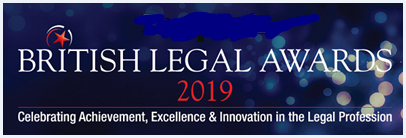Inhouse legal team of the year
Jump to navigation
Jump to search
|
People Anatomy™
A spotter’s guide to the men and women of finance.
|
To bring some rigour to the annual Awards season, and short of some kind of centralised hunger games whereby different inhouse legal teams gather to duel, or compete to the death in a tedium-endurance heptathlon — the JC today publishes standardised criteria by which judging panels — who plainly have no clue otherwise — may assess finalists for inhouse legal team of the year awards.
As any experienced inhouse lawyer will tell you, the following are the core skills:
- Timeliness of brief: After an indolent day spent in CPD seminars and panel discussions, how reliably can you hit the magical 6 p.m. deadline for dropping a “drafts required by open of business tomorrow so help me” instruction on external advisors?
- Inexplicable delay: For how many weeks can you leave the aforementioned drafts — whose immediate turnaround you expressed to be a matter of life and death, and for whose production the external team rearranged long-standing plans to attend the theatre, celebrate wedding anniversaries and so on — before deigning to look at them?
- Yes, but can I speak to a partner please? How disdainful can you be to the junior-most lawyer on the external team should she try to answer your uninformed questions about a document she has just spent sixteen hours preparing?
- Red-herring ninjadom: How comprehensive is your knowledge of the punctuation, typography, weight, kerning, leading and style of the firm’s legal name wherever it appears in a prospectus?
- Mark-up pedantry/ambiguity: Beyond the inherent pedantry of the red-herring ninja, how brazenly superficial are your amendments to perfectly sound legal drafting? Points available for:
- refusing to hear of modifications to your comments notwithstanding their illegibility, incomprehensibility or irrelevance;[1]
- how rigorously you mark-up closing agendas, bible tables of content and process agent appointment letters, relative to your substantive input — if any — on the deal documentation;
- the inscrutability of your mark-up: a question mark, exclamation point or other cryptic glyph, annotated airily in a margin, apropos nothing but just hovering there, transcendent, above the fray, exuding other-worldly wisdom without giving anything away, leaving external counsel the task of extracting meaning from it and converting that into a positive textual amendment, over which you then have a free option: if it turns out to be brilliant, you can take all credit; if it is not, you can ...
- Throw the associate under the bus: How shamelessly will you blame the most junior member of outside counsel team — the one whose name you keep forgetting and whose thoughtful explanations count for nothing in the “yes, but can I speak to a partner please” category — for neglecting to prepare and circulate “critical legal documentation” that has, in fact, been in your inbox since 4.30 a.m. on the Saturday morning immediately following your 6 p.m. request for it?
- External law-firm management: How insistent are you in requiring any external spend over £2,500 to go through a mandatory three-way bidding process?
See also
References
- ↑ Any Legal markup can be situated somewhere on a “utility continuum”, between the deal-killing blockbuster, whereby a legal eagle saves her client from certain ruin, at one end, and guileless frippery, by dint of which she scrapes over her billable threshold for the month, at the other. The median point is, we need hardly say, nearer the fripperous end, but if you venture a few standard deviations past that, you approach an absolute theoretical minimum, beyond which the utility of any legal mark-up is utterly nil. That final, infinitesimal point, past which the thinnest atomic strand of half-hearted value can be no further reduced — the so-called “Biggs constant” — was first isolated in 1997 when, either by deliberate design or happy accident, a gentleman from the in-house team at a leading financial services institution found it while marking up a pricing supplement he had received by fax. From me. Despite the Byzantine complexity of the document, his only comment was a direction to his diligent counsel — yours truly — to remove the bold formatting from a full stop. This he communicated, also by fax, at 2:35 in the morning. In the kind of irony that accompanies so many of the world’s most momentous occasions, it turned out upon inspection that the full stop wasn’t bold in the first place, but was a printed artefact from the low resolution of the fax.
